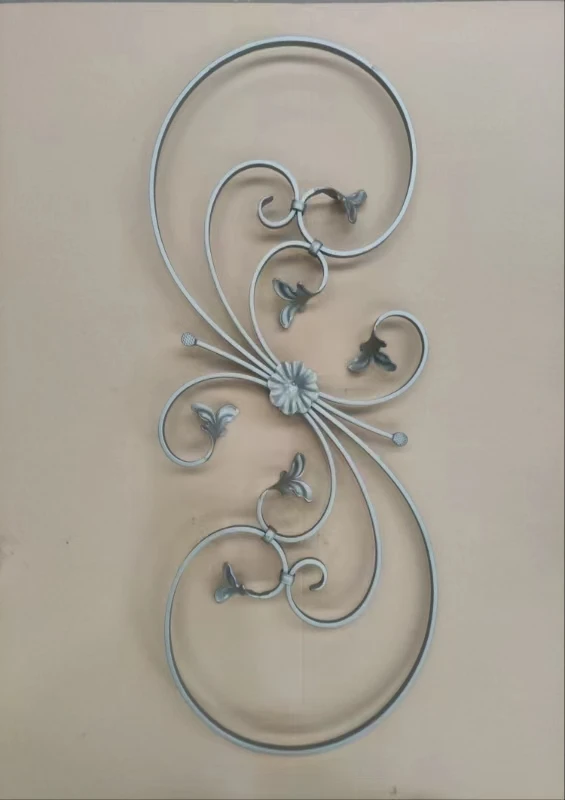how is wrought iron produced
The Production of Wrought Iron A Historical and Technical Overview
Wrought iron, known for its distinctive fibrous texture and malleability, has been a fundamental material in construction and tool-making for thousands of years. The production of wrought iron is a fascinating process that has evolved over time, melding ancient techniques with modern advancements.
Historically, the term wrought iron refers to iron that has been heated and worked (or wrought) by hand or machine. The earliest known production of wrought iron dates back to around 1200 BC, in regions such as Anatolia and Mesopotamia. The traditional method of producing wrought iron involves several steps, primarily smelting and forging.
Smelting Process
The journey of wrought iron begins with the extraction of iron ore, which is typically found in the form of hematite (Fe2O3) or magnetite (Fe3O4). This ore is often mined from open-pit mines. Once extracted, the ore is then prepared for the smelting process. The historical method of smelting involved using a bloomery furnace — a simple structure made of clay or stone.
In the bloomery furnace, layers of iron ore and charcoal are alternately stacked and heated. The charcoal serves as a reducing agent, which is crucial in separating the iron from its ore. As the furnace is heated to a temperature around 1200 degrees Celsius (around 2200 degrees Fahrenheit), the iron ore begins to melt. This process does not fully liquefy the iron; instead, it forms a spongy mass called a bloom, which contains both iron and slag (impurities).
Forging and Refining
After the bloom is created, it is removed from the furnace while still hot and is then subjected to hammering or forging. This step is essential as it helps to consolidate the iron particles, removing excess slag and resulting in a more ductile and stronger material. The hammering process works the iron into flat sheets or various shapes, depending on its intended use.
how is wrought iron produced

Traditional blacksmithing techniques also play a significant role in the production of wrought iron. Blacksmiths use tools such as hammers, anvils, and chisels to shape the iron into the desired form. This handcrafted method allows for intricate designs and the ability to create tools, hardware, and decorative elements.
Modern Production Techniques
Although the ancient methods of wrought iron production laid the groundwork, the 19th century witnessed significant advancements. The industrial revolution brought about the development of more advanced furnaces, such as the puddling furnace and the Siemens-Martin process. These techniques allowed for more efficient production and higher quality wrought iron.
The puddling process involves melting pig iron in a reverberatory furnace. During this process, air is introduced into the molten metal, causing carbon and other impurities to oxidize. The wrought iron produced through puddling was of high purity, which made it ideal for various applications in construction and manufacturing.
Moreover, the advent of steel production has influenced wrought iron. While steel is an alloy of iron and carbon that offers superior strength, wrought iron still holds relevance today in specific applications, particularly in architectural and decorative contexts. Modern techniques often blend wrought iron with steel, creating hybrid materials that leverage the benefits of both.
Conclusion
In conclusion, the production of wrought iron is a blend of ancient craftsmanship and modern industrial technique. From the humble bloomery furnace of the early iron age to contemporary methods that enhance efficiency and quality, the journey of wrought iron showcases humanity's ingenuity in materials science. As we continue to innovate, wrought iron remains a testament to our enduring relationship with one of the earth’s most versatile and historically significant metals. The techniques developed over centuries fuel not only the practical but also the aesthetic dimensions of wrought iron in contemporary society.
-
Wrought Iron Components: Timeless Elegance and Structural StrengthNewsJul.28,2025
-
Window Hardware Essentials: Rollers, Handles, and Locking SolutionsNewsJul.28,2025
-
Small Agricultural Processing Machines: Corn Threshers, Cassava Chippers, Grain Peelers & Chaff CuttersNewsJul.28,2025
-
Sliding Rollers: Smooth, Silent, and Built to LastNewsJul.28,2025
-
Cast Iron Stoves: Timeless Heating with Modern EfficiencyNewsJul.28,2025
-
Cast Iron Pipe and Fitting: Durable, Fire-Resistant Solutions for Plumbing and DrainageNewsJul.28,2025
-
 Wrought Iron Components: Timeless Elegance and Structural StrengthJul-28-2025Wrought Iron Components: Timeless Elegance and Structural Strength
Wrought Iron Components: Timeless Elegance and Structural StrengthJul-28-2025Wrought Iron Components: Timeless Elegance and Structural Strength -
 Window Hardware Essentials: Rollers, Handles, and Locking SolutionsJul-28-2025Window Hardware Essentials: Rollers, Handles, and Locking Solutions
Window Hardware Essentials: Rollers, Handles, and Locking SolutionsJul-28-2025Window Hardware Essentials: Rollers, Handles, and Locking Solutions -
 Small Agricultural Processing Machines: Corn Threshers, Cassava Chippers, Grain Peelers & Chaff CuttersJul-28-2025Small Agricultural Processing Machines: Corn Threshers, Cassava Chippers, Grain Peelers & Chaff Cutters
Small Agricultural Processing Machines: Corn Threshers, Cassava Chippers, Grain Peelers & Chaff CuttersJul-28-2025Small Agricultural Processing Machines: Corn Threshers, Cassava Chippers, Grain Peelers & Chaff Cutters












